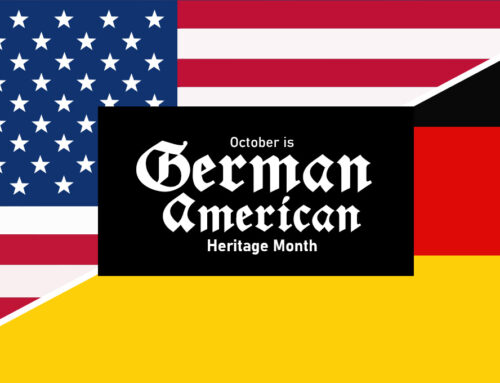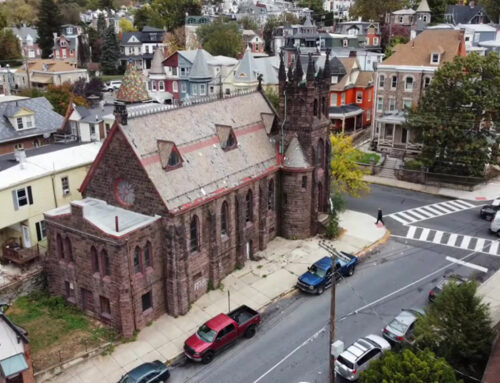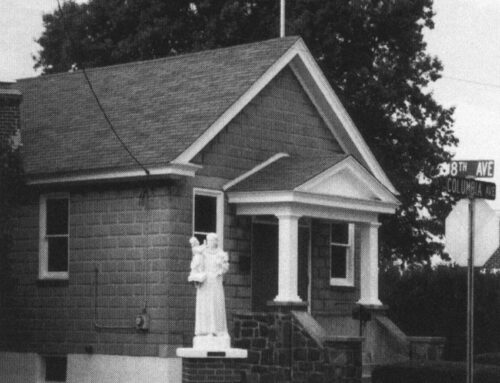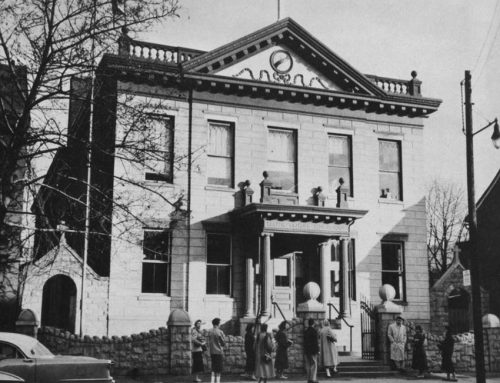For more than half of our nation’s history, social services were not provided by the government, but by benevolent and religious institutions. As the number of Catholics in Berks County grew, so did the establishment of a number of convents of women religious in the area. These communities of women religious served a variety of religious and secular purposes. One such convent established in Reading was the House of Good Shepherd that provided shelter for young women.
In May, 1888, application was made for the establishment of a House of Good Shepherd in Reading. A member of St. Peter’s parish in Reading gave two acres of land to aid the foundation, but this tract was too far from the city to be utilized. It was finally decided to secure another property and the Leippe residence at 4th and Pine streets was purchased for $18,000. The House of the Good Shepherd was opened on March 5th, 1889, and the first Mass said on March 6th. The facility was staffed by the Order of Our Lady of the Good Shepherd, thus the name for the facility, the House of Good Shepherd.
This building becoming too small, on the advice of Rev. George Bornemann, pastor of St. Paul’s Church, various sites were visited, and a piece of ground 330 x 400 feet, valued at $3,000, situated at Glenside, Bern Township, was considered most suitable. It was donated by Rev. Father Bornemann and the donation most gratefully accepted. Rev. Father Bornemann then authorized suitable plans to be drawn up, and bids taken for the erection of the building. On November 22nd, 1895, the cornerstone was laid by Archbishop Ryan. During the erection of the handsome structure Rev. George Bornemann superintended the laying-out and beautifying of the grounds and finally on June 21st, 1900, dedicated the beautiful and comfortable home.
Below: Marymount-on-the-Schuylkill, better known as the House of the Good Shepherd, located on the east side of the Glenside hill – near the Schuylkill Avenue Bridge – was completed in 1900.

The structure was in French Gothic style with a large tower in the center surmounted by a gilt cross. The material used in construction is limestone in broken range, rock face with cut brownstone trimmings. The home, which was built in the form of a square cross was surrounded by nature’s best scenery, situated on the west bank of the Schuylkill River, with a magnificent view of the city from its windows.

The front wing of the square cross was occupied by the sisters, the right wing by the girls, and the left wing by the Magdalens. The order of the Magdalenes was established through a special dispensation by the Mother foundress (a woman who establishes something, as an institution or religious order; founder) of the home. The order was composed largely of girls who were once inmates of the home through mistakes or waywardness. Many girls, who entered this institution under compulsion found a haven from the worries of the world, and realizing the dangers and pitfalls of the world, were eager to spend the remainder of their lives in the home. The girls were free to come and go as they chose, many of them eventually taking the habit and order of Magdalenes. For admittance into the order of Magdalenes the candidates had to serve one year as postulates, after which they took the vows of poverty, chastity, and obedience, these vows being renewed every year for nine years before the perpetual vows were taken. While the majority of girls at the home ranged from 16 to 19 years of age, there were a number of smaller children.
The chapel occupied the entire second floor. The altar for the celebration of mass was erected on a platform in the center, at an elevation of several feet so that it could be seen from all points. This enabled the entire community to attend the same divine service at the same time. The four sections were connected with it by means of handsome arches covered with incandescent lights. Being laid out in the form of a cross, the worshippers, in one division could not see those of another, as the altar in the center obstructed the view. Instead of regular church pews, they contained “stalls” arranged in rows along the side. There was a large vacant space in the center. The stalls were separated from one another and had ornamental high backs. That portion occupied by the sisters was on the western or front side of the building. It had a seating capacity of 35. The north side apartment was occupied exclusively by the Magdalens. Its arrangement was similar to the sisters’ chapel. Fifty-five penitents worshiped in the south side chapel. The singings for the services were furnished by the sisters, one of their number presiding at the organ. But on feast day and on other special occasions the Magdalens and sometimes the penitents joined in the rendition of special hymns. Above the sanctuary there was a stained glass skylight, octagon in shape. It was made of delicate colors, white and gold being used to a great extent. The altar was of pretty design. The table was built on small columns, so that the figure of the officiating clergyman could be seen underneath from all the four points. There was a table on both the east and west sides of it, so that either can be used.
The illumination of the chapel, and especially the sanctuary, was grand. On special occasions, when all the lights were in service, the chapel presented a pretty scent. On both sides of each of the four large arches there were rows of incandescent lamps and there were lights at close Intervals around the walk. All through the building there were hundreds of electric lamps.
Among the many gifts bestowed upon the home was a beautiful statue of the Good Shepherd which adorned the front entrance. In 1904, a 100 lb. bell, cast in Baltimore, was donated by Father Bornemann and members of St. Paul’s parish.
Mary Mount was the name over the front entrance but its legal name was House of the Good Shepherd. The institution, while founded and kept up by a sisterhood of the Catholic Church, was non-sectarian in its reach, taking into its shelter and care any girl needing the protection of such a home, regardless of creed or denomination. Since the House of the Good Shepherd was a religious Institution, the religious ceremonies played an important part, the singing of hymns at work being a frequent occurrence. The aim of the institution was primarily, not so much to make good Catholics, as to make good women. The spacious grounds that surrounded the home afforded ample opportunity for recreation, periods for this purpose being given after each meal. A school starting with fifth grade classes on up through high school courses and special recreational activities were conducted daily. In addition there were courses in music and home nursing. Nuns supervised an orchestra and a drama club.

By 1915 the house had sheltered and cared for over 2500 girls, of whom 96 have entered the Magdalena. In 1915 it housed 127 girls, and 44 devoted Magdalena.
In 1928, Sister Mary, of the Nativity of the Order of Good Shepherd, one of the first sisters to become attached to the House of Good Shepherd in the city, died of complications at the House of Good Shepherd. She had been ailing for six months. In civil life, the deceased was Catharine Garrity of Philadelphia. She was 73 years of age. She was on continuous duty at the institution for 39 years.
The House of Good Shepherd greeted motorists and pedestrians for many years as they crossed the Schuylkill Avenue Bridge from Reading into Glenside. From its humble beginnings at Fourth and Pine Streets in Reading, to the new facility located at 1135 Schuylkill Avenue, over 5,300 young ladies received shelter at the House of Good Shepherd until the facility and the 11 surrounding acres were sold to a local steel mill, the Carpenter Technology Corporation, for $450,000 in 1970. The Sisters of Our Lady of Charity of the Good Shepherd found homes for the remaining girls in other schools that were run by the religious community. The French Gothic landmark was razed in May 1973, and the parcel of land now houses a number of buildings of Carpenter Technology.







Leave A Comment